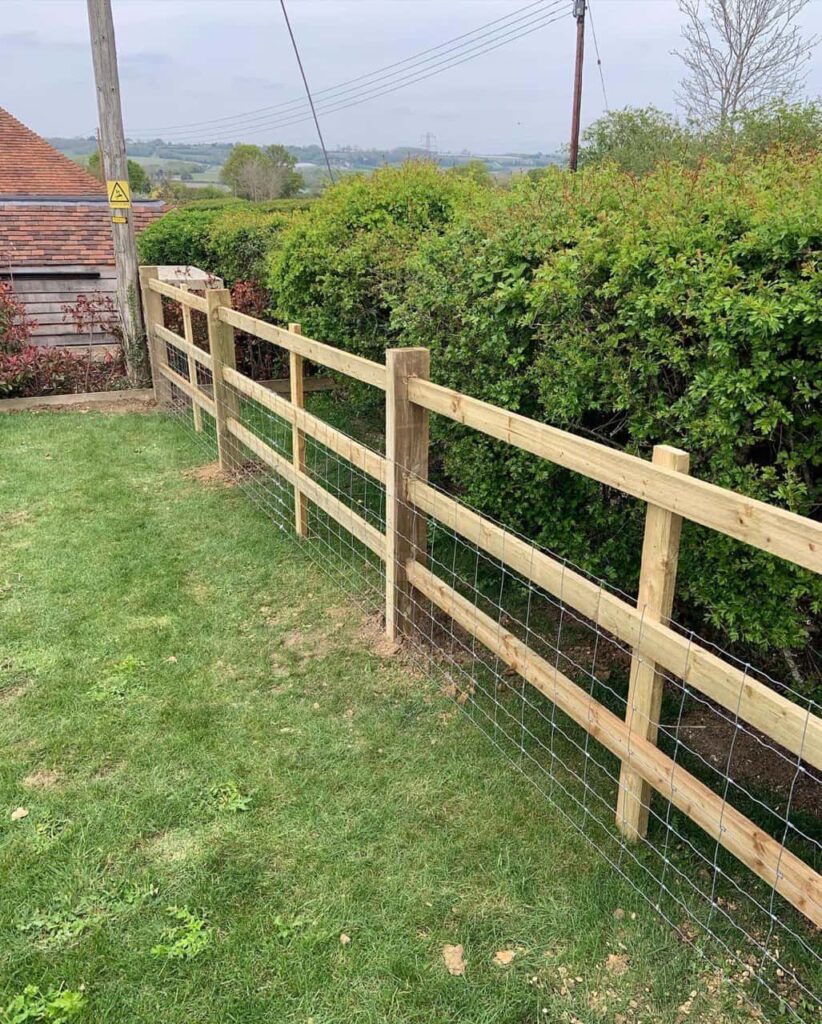How to Keep Livestock Safe and Secure with Proper Stock Fencing Setup
For landowners, farmers, and smallholders, the safety and security of livestock is a daily priority. A well-planned and properly installed stock fencing system is one of the most effective ways to protect animals, manage grazing areas, and prevent escape or intrusion. At Fast Fix Fencing Oxted, we support clients across Oxted, Surrey with reliable and durable stock fencing solutions tailored to a variety of livestock needs.
In this article, we explore the key considerations for stock fencing, the types available, and how to ensure your fencing setup meets the highest standards of safety and performance.
Why Stock Fencing Matters
Stock fencing is designed to contain animals securely within a designated area while withstanding the pressures of movement, weather conditions, and potential damage. Poorly installed or unsuitable fencing can lead to:
- Animals escaping and straying onto roads or neighbouring properties
- Injury to livestock through sharp or poorly tensioned wires
- Predators entering enclosures and harming vulnerable animals
- Grazing areas being overused or mismanaged
A professional stock fencing setup, designed for your specific livestock and land, helps to avoid these problems while simplifying daily farm management.
Key Elements of an Effective Stock Fencing System
1. Choose the Right Fencing for the Livestock Type
Different animals have different behaviours and containment needs. The type of fencing you choose must be appropriate for the species.
For sheep:
- Use medium-height galvanised stock netting with smaller mesh at the base to prevent lambs slipping through.
- Include two or more tensioned plain wires for stability.
For cattle:
- Stronger posts and thicker gauge wire are essential to withstand leaning or rubbing.
- Barbed wire or electric wires may be added for additional deterrent.
For horses:
- Avoid wire mesh, which can cause leg injuries.
- Opt for timber post and rail or electric fencing with high visibility tape or rope.
For pigs and goats:
- Use low, close-mesh fencing with ground-level tensioned wires to prevent digging or climbing.
- Secure posts are vital as these animals can be very persistent.
2. Use Strong, Durable Materials
- Galvanised steel wire provides long-term resistance to rust and wear.
- Pressure-treated timber posts last longer and resist rot and insect damage.
- All fixtures and fittings should be heavy-duty and installed to maintain tension over time.
3. Proper Post Spacing and Depth
- Posts must be set deep enough to handle soil movement and pressure from livestock.
- Straining posts should be used at corners and gate sections to ensure the wire remains taut.
- Spacing will depend on the terrain and fencing type but generally ranges from 2 to 3 metres for intermediate posts.
4. Gates and Access Points
- Install secure and appropriately sized gates to allow easy access for feeding, maintenance and animal movement.
- Hinges and latches should be robust and positioned to prevent accidental opening by curious livestock.
5. Electric Fencing Integration
- Electric fencing can be used in conjunction with traditional fencing for added deterrence.
- It’s especially useful for boundary reinforcement or to segment grazing areas within larger fields.
Planning for Longevity and Safety
A good fencing setup isn’t just about installation — ongoing condition and layout matter too. At Fast Fix Fencing Oxted, we always recommend the following:
Carry Out Regular Inspections
- Walk the boundary every few weeks and after storms or high winds.
- Look for loose wires, leaning posts, broken mesh, or signs of animals pushing through.
Maintain Tension and Clear Vegetation
- Regularly re-tension wires to keep the fencing structure sound.
- Trim back hedges, brambles, and grass growth near the fence line to prevent damage and shorting (in the case of electric fencing).
Adapt to Seasonal Changes
- Ensure animals have adequate space and shelter throughout the year, and consider adding temporary fencing or dividing fields to manage rotational grazing.
Why Choose Fast Fix Fencing Oxted?
At Fast Fix Fencing Oxted, we have extensive experience in designing and installing secure stock fencing across Oxted, Surrey. We understand the specific needs of livestock owners and offer solutions that are:
- Built to endure all seasons and animal activity
- Installed with precision to minimise maintenance
- Compliant with local regulations and best practice
- Tailored to suit the terrain and livestock type
Whether you’re managing a large herd or a few animals on a smallholding, our professional team ensures every detail of your fencing system is robust, reliable, and fit for purpose.
Conclusion
Proper stock fencing is more than just a boundary — it’s a crucial element in keeping your livestock safe, managing your land effectively, and avoiding potential risks or losses. A professionally installed fencing system, tailored to your animals and land, provides long-term value and peace of mind.
If you’re in Oxted, Surrey and looking to install or upgrade your stock fencing, contact Fast Fix Fencing Oxted today. We’ll help you design a solution that keeps your animals secure and your property protected all year round.
Call us on: 01883 770 894
Click here to find out more about Fast Fix Fencing Oxted
Click here to complete our contact form and see how we can help with your fencing needs.

